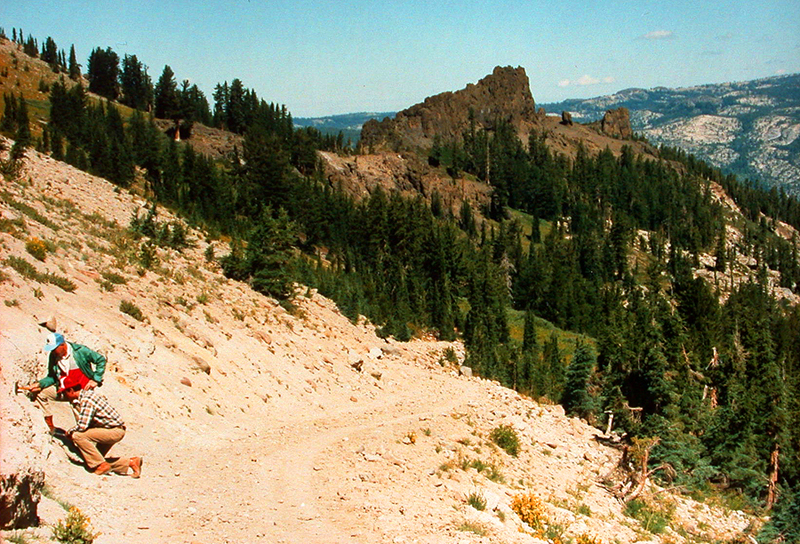
|
Enthusiastic paleobotany participants investigate the primary fossil plant locality in the upper Miocene Disaster Peak Formation. Viewing perspective is roughly northward. Today, the site lies at an altitude of 8,640 feet, but the 14 species of plants preserved here prove that 7 million years ago the very spot, now slightly above the local timberline, would have resembled a modern Douglas-fir forest in the lower western foothills of the Sierra Nevada at elevations no higher than 2,500 feet, with subordinate groves of giant sequoia thriving nearby. The four most abundant fossil plant forms secured from the Disaster Peak Formation sandstones are leafy branchlets from a cypress, Cupressus mokelumnensis (an extinct cypress that is similar to the living Chinese weeping cypress--now native to China; leafy twigs from a Douglas-fir, Pseudotsuga sonomensis; entire leaves from an evergreen live oak, Quercus pollardiana (Canyon live oak); and leaves from a species of tanbark oak, Lithocarpus klamathensis. In decreasing order of relative prevalence, the flora also contains a cattail, Typha lesquereuxii; a willow, Salix wildcatensis (arroyo willow); a white fir, Abies concoloroidea; a giant sequoia, Sequoiadendron cheneyii; a second species of willow, Salix hesperia (Pacific willow); an elm, Ulmus affinis (an extinct species most similar to the extant American elm); a species of sugar pine, Pinus prelambertiana; a pine, Pinus sturgisii (western yellow pine); a juniper, Juniperus sp.; and a third species of willow, Salix boisiensis (Scouler's willow). |